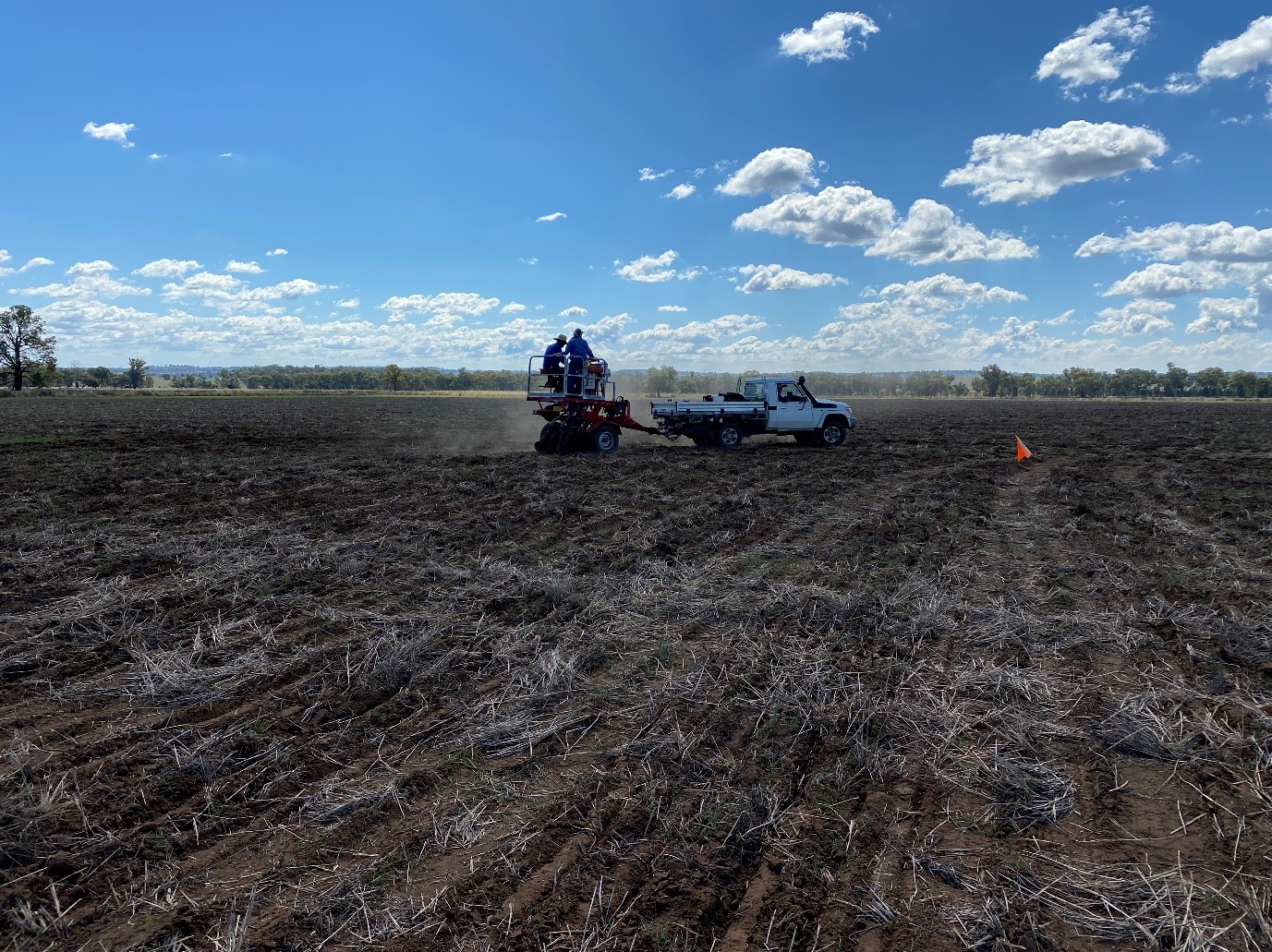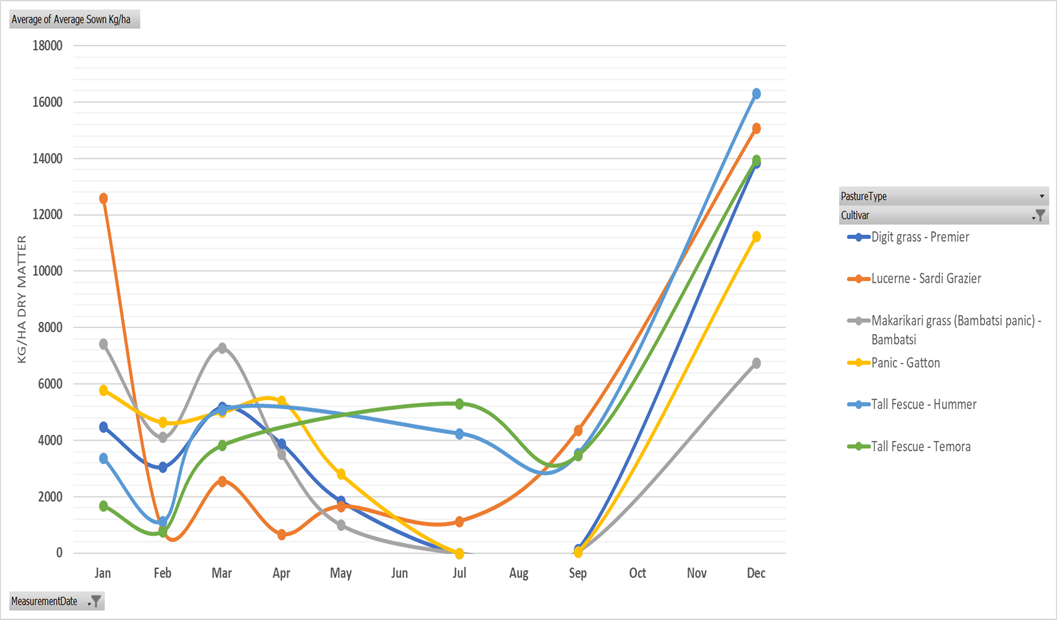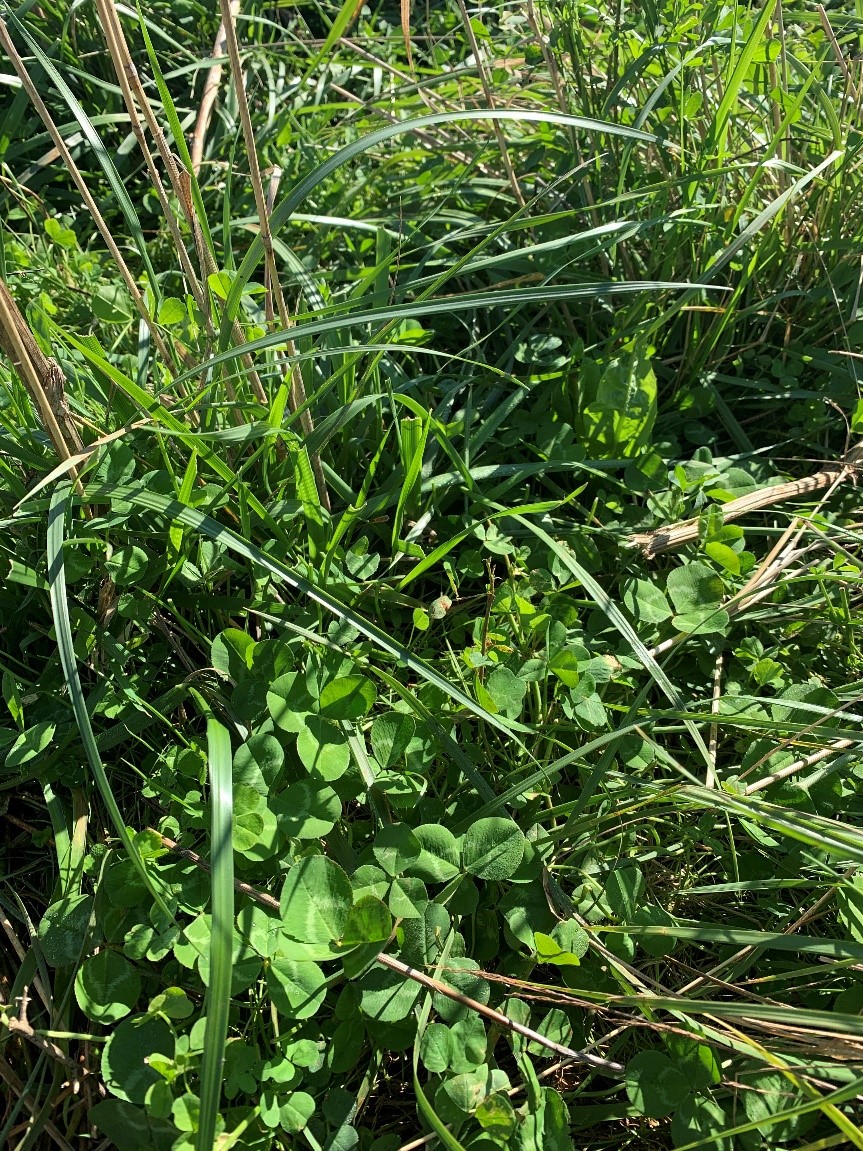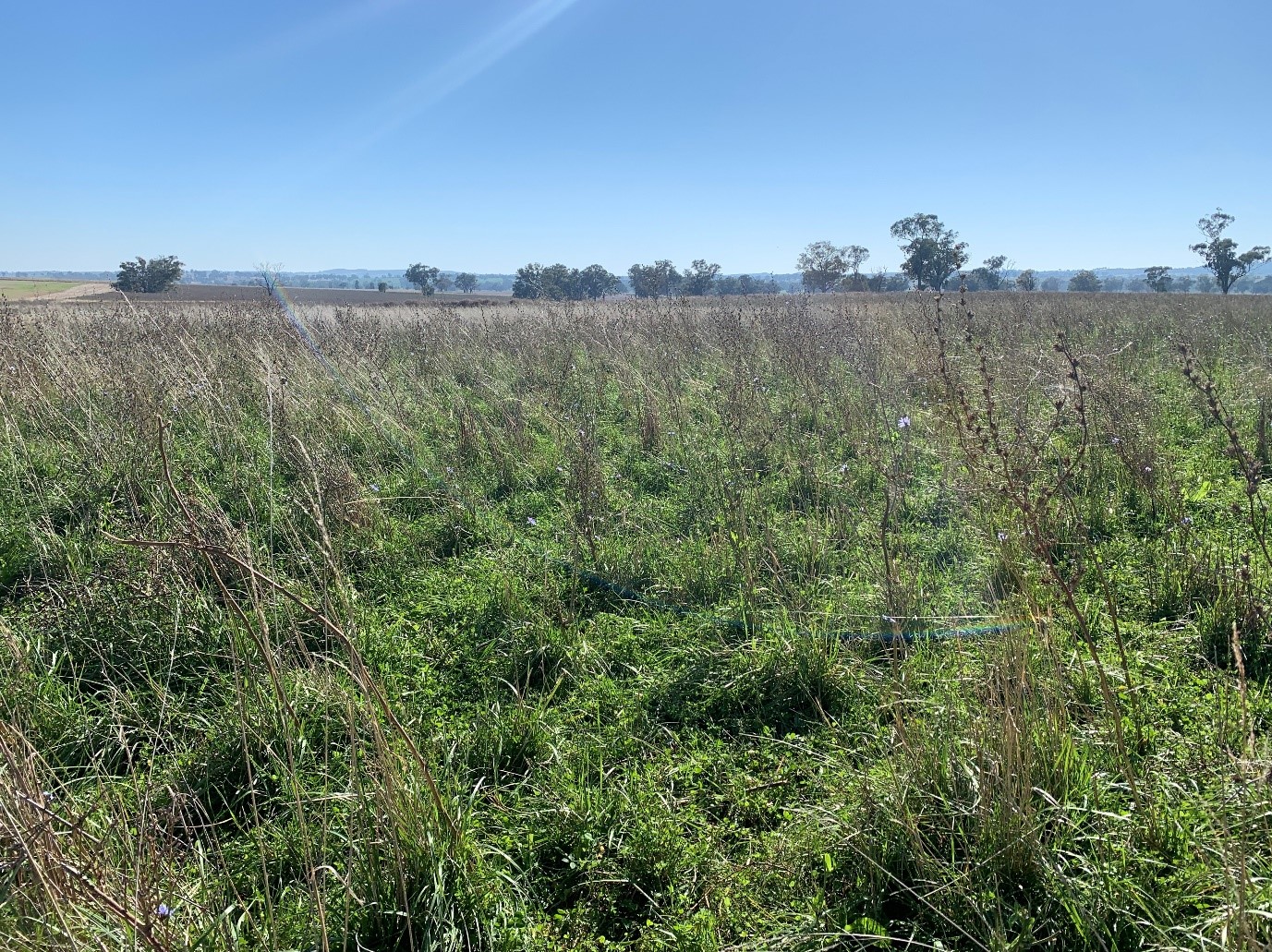Productive potential of temperate pastures
01 May 2022
By Rohan Leach, Mixed Farming Advisor
Producers in the Central West (CW) may be seeing in a critical feed gap this autumn due to slow pasture growth rates in their unimproved pasture paddocks. To try and overcome this problem in future seasons they should consider sowing temperate pastures to improve their productivity in the cooler months. Temperate pastures have the potential to fill seasonal feed gaps or provide high quality feed capable of finishing livestock, without the need to supplementary feed. Additionally, increased quality and quantity of feed can mean increased stocking rates and a better bottom line.
Local Land Services is in the process of sowing three temperate pasture demonstration sites across the CW. The sites located near Coonabarabran (seen in Figure 1), Wellington and Forbes, have been selected to showcase a variety of rainfall patterns, annual rainfalls and soil types. With 45 different varieties going in at each site, the demos are designed to give producers and consultants a look at what species and varieties might be suited to their farm or region.

Figure 1: DPI's plot seeder being used to sow some demonstration sites across the Central West
While tropical grasses have been growing in popularity in recent years, it is important not to forget the value of temperate species.
Tropical vs Temperate Pastures
A study undertaken at Cowra by Newell et al. 2022 measured several production features of tropical and temperate pasture species. Figure 2 shows the dry matter production measured from different cultivars for the 2021 year. The graph highlights tropical species like Digit Grass, Bambatsi panic and Gatton panic that provide high dry matter (DM) production in summer while the temperate species like fescue have high production through winter and spring.

Figure 2: Measured dry matter production over time for select cultivars at the Cowra evaluation site.
One of the advantages of perennial pastures is that they have a “head start" on annual pasture species, by responding faster after rainfall with a greater bulk of feed than many annuals. The light green and blue lines from Figure 2 are a great example of how temperate perennial pastures can provide a high-quality bulk of feed in autumn, a traditional feed gap period for the CW.
Some producers may look at the high growth rates of tropical grasses and see this as better. However, each pasture system has its place, with temperate species possessing a much higher digestibility and feed quality. High growth rates of 1.5-2.0kg/day in cattle and 300-400g in lambs are possible. The pasture seen in Figure 3 & 4 carried lambs over the 2022 summer and early autumn and provided growth rates over 350g/day.

Figure 3: This fescue, lucerne, chicory and clover pasture near Wellington is providing a high quality feed this autumn after a wet end to summer (2022).
Ideally, it may suit some to have both temperate and tropical pastures sown on their farm to take advantage of rainfall at different times of the year. This can also allow flexibility for graziers in when to turn off livestock to capitalise on high livestock prices. Whatever grass you decide to use, it is important to have companion legume species in the mix. Legumes provide improved grazing quality as well as fixation of Nitrogen (N) through rhizobium nodulation. Additionally, the added N provides a boost to grass growth.

Figure 4: High quality temperate pasture capable of 350g/day growth rates in lambs
What to consider when sowing your own pasture
DPI’s “Temperate perennial pasture establishment guide”, provides some handy steps for producers to follow when thinking about a pasture improvement program.
- Plan and assess paddocks for pasture establishment – Ask yourself what your goals with this pasture are. Do I want to finish lambs in spring? Do I want a quality pasture to calve down in winter? Assess the costs and returns in a budget.
- Identify soil chemical and landscape issues – Test to reveal soil constraints and amelioration strategies.
- Weed and pest control in years prior to sowing – Weed competition is the biggest reason for failure of establishment of pastures. Reducing the weed seed bank in the years prior to sowing is essential.
- Absolute weed and pest control at sowing – Allow weed germination after autumn break. Dry sowing is to be avoided.
- Adequate soil moisture at sowing – Moisture should be conserved in the fallow period over summer before sowing.
- Seed placement and quality – Use certified seed where possible with germination tests and certificates of analysis. Ensure that legumes are paired with their corresponding inoculant for rhizobium nodulation. Do not sow too deep with 1-2cm of soil coverage adequate for most varieties – some species may be even less.
- Monitor weeds and pests after sowing – The first weeks after sowing are crucial. Pests like mites, slugs or grubs can wipe out seedling pastures rapidly.
- Grazing management of new pastures – Only graze in the first spring if conditions are favourable. Most would not risk compromising the new pasture by grazing and instead allow to set seed in the first year. This lost grazing is made up in subsequent years and is easily accounted for in the lifetime of an 8–10-year-old perennial pasture.
If you would like to learn more about pastures and your farm or would like to attend the pasture demonstration days at Forbes, Coonabarabran and Wellington in spring, please contact Rohan Leach (0417 021 795 | rohan.leach@lls.nsw.gov.au).